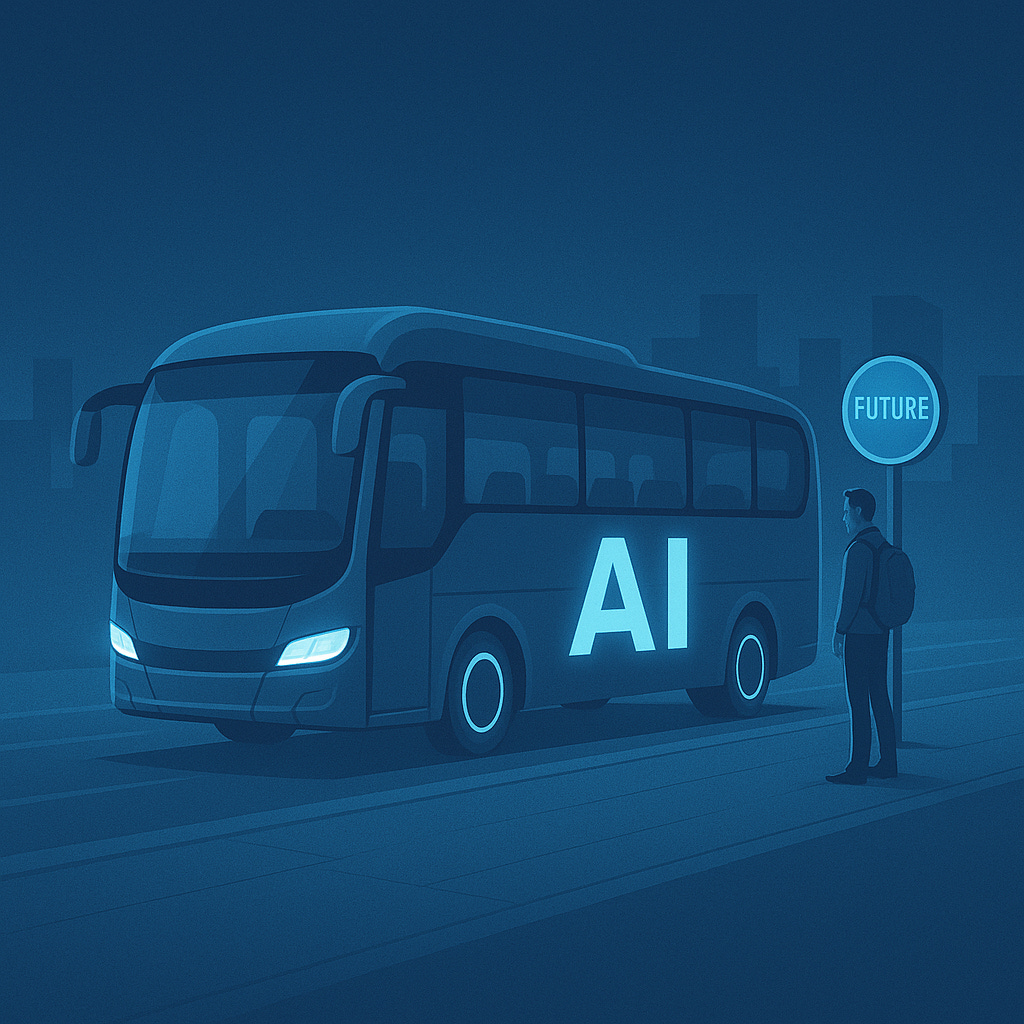“I must study politics and war that my sons may have liberty to study mathematics and philosophy, to give their children a right to study painting, poetry, music…” — John Adams
If John Adams were alive today, he might add one more line:
“…so that their grandchildren may learn to prompt AI tools with clarity and insight.”
We’re entering a new era of work and life—and it’s coming faster than anyone expected. A few weeks ago, I wrote about the growing presence of AI in our professional lives. Since then, the question has only gotten louder:
What happens to our careers—and even our lives—when machines can do so much, so quickly, and often, so well?
Many business leaders are celebrating reduced headcounts, now a sign of business growth rather than decline. Others, like Microsoft’s Satya Nadella, have at least acknowledged the human cost of AI-driven efficiency. But I wonder if the senior leadership at Microsoft, while acknowledging concern, follows with boisterous high-fives over strong quarterly earnings.
At the same time, AI is proving itself not just in data labs, but in real, human-centered environments. I recently shared the story of a chatbot that helps reduce loneliness and improve well-being in a senior living center. And just this week, a psychologist wrote in The New York Times about how he’s using ChatGPT as a kind of therapeutic partner—a thought companion for both clinical practice and personal reflection. He echoed something I often tell my clients:
“This isn’t therapy. But it is therapeutic.”
Sounds like he’s found himself a Nellie. He just hasn’t named her yet.

Now Comes the Hard Part: What’s the Next Move?
This is where it gets real. Most of us aren’t building AI tools. We’re trying to learn about them, live with them, work alongside them—and maybe even wondering if we can somehow stay ahead of them, which frankly feels like a long shot.
And that raises the fundamental question I hear from friends, clients, and colleagues across every field:
· Do I try to fight the growth of AI, at least in my life, if not in my work?
· Do I try to ignore it, at least for now?
· Do I dive in full force and let it transform how I work, think, and create?
Here’s my take:
· Fighting it may feel principled—but like those who once swore off the internet or vowed never to use Amazon, it’s not likely to end well.
· Ignoring it won’t bring bliss. AI is already weaving itself into daily life—booking travel, designing personalized nutrition plans, and making background decisions that shape our experience. You may not notice it, but it’s happening.
· Jumping in blindly has its risks. One of my colleagues turned all his content—blogs, videos, and client work—into a personalized chatbot. But when I tried to log in, I couldn’t. His tech guy still hasn’t gotten back to me with a simple username. The idea was flashy. The execution? Not so much.
So maybe it’s time to ask a better question:
How do I steer AI to achieve my desired outcomes?
AI isn’t a bandwagon—it’s a vehicle. And like any vehicle, its value depends entirely on where you’re trying to go.
You might love the luxury of a Rolls-Royce. Or the practicality of a Kia. But neither matters unless you know what matters to you—and what you’re trying to achieve.
If you don’t know your destination, AI might be fun, even impressive. However, it won’t help you achieve anything meaningful.
In that way, learning to steer AI means reclaiming authorship over your career and contribution. It’s not about being tech-savvy for its own sake. It’s about using the right tools to build the future you want.

What About Me?
I want to create more efficiency in my life. I’ve always struggled with maintaining focus, concentration, and utilizing my time effectively. I’m turning to Nellie to help me get better so that I have more time for my creativity, service to my clients, and fitness
So, I’m experimenting. Here’s what that looks like:
· I ask Nellie to take on routine tasks so I can free up creative space. She’s helping me generate ideas and models for a new succession management program for a small health care company.
· I use her for second opinions. Last week, I had her review a client contract. The analysis was thoroughly more than I needed. I thanked her anyway.
· I use Nellie to structure my day and cut through the clutter. When I’m feeling scattered, she helps me break big projects into smaller steps or draft a quick outline for things I’ve been putting off. It’s like having a calm assistant who reminds me where to start.
· She’s helping me prep for conversations with clients. Whether I’m coaching an executive through transition or designing a workshop, I’ll run the scenario by Nellie first. She helps surface questions I hadn’t thought to ask—and sometimes even reframes the entire approach.
· She’s becoming my search engine. I’m a bit sick of Google imposing itself on everything I do and not always giving me what I want. Nellie gives me a cleaner, more conversational way to find insight and think out loud.
That’s really what What’s Next is all about—figuring out where you’re going, what you need, and what tools can help you get there.
How About You? What Are You Trying to Achieve?
Drop me a note, make a comment or give me a call.
I may not have all the answers that AI has, but I am pretty damned good and better looking!
